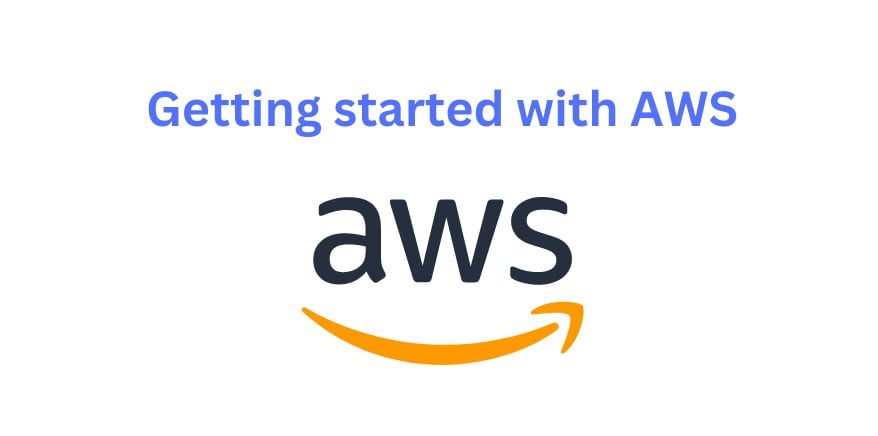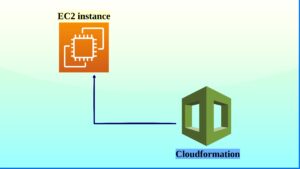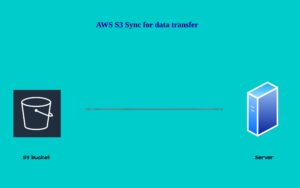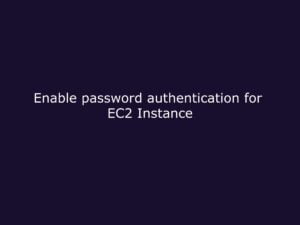
Looking to take advantage of the cloud? Amazon Web Services (AWS) is the perfect choice for easy storage and computing services. Get started with AWS and find out what makes its basic offerings so powerful. Before getting started with AWS and its basic services we need to know the importance of cloud computing.
What is Cloud Computing?
Cloud computing is a model for delivering computing resources and services over the internet, rather than hosting them locally. Sounds cool isn’t rather than allocating space and buying resources to host our application globally we can provision and manage them with a matter of few clicks and an internet connection.
Imagine an older scenario where we need to allocate a separate room for our servers and other hardware not only that we need to manage the air conditioning, security, disaster recovery and all other factors related to it but in the cloud, we don’t need to bother about any of these factors as our cloud provider will take care of it.
What are the benefits cloud computing provides?
- Cost savings: Cloud computing allows you to pay for only the computing resources that you use, rather than having to invest in and maintain your own physical infrastructure. This can be more cost-effective than building and maintaining your own data centres.
You need not be bothered about the total upfront cost rather you need to only pay for the resources which you have used. - Scalability: Cloud computing allows you to easily scale your computing resources up or down as needed, without having to invest in additional hardware or infrastructure. We can scale up or down our resources with a matter of a few clicks.
- High availability: Cloud providers typically offer high levels of uptime and reliability, which can be important for mission-critical applications.
- Flexibility: Cloud computing allows you to access computing resources from anywhere, using any internet-connected device. This can be helpful for remote teams or for organizations with a distributed workforce.
- Security: Cloud providers typically have robust security measures in place to protect your data and applications. We need to take care of the security of our application however the providers will take care of the security of their data centres.
Now we got a basic understanding of the cloud and its benefits so what are the top cloud providers out there?
- Amazon Web Services (AWS): AWS is one of the largest and most widely used cloud platforms, offering a wide range of services including computing, storage, databases, networking, analytics, machine learning, and more.
- Microsoft Azure: Azure is a cloud platform that offers a range of services for building, deploying, and managing applications and workloads. It also offers a range of tools for analytics, machine learning, and Internet of Things (IoT) applications.
- Google Cloud Platform: Google Cloud Platform is a cloud platform that offers a range of services for computing, storage, networking, data analytics, machine learning, and more.
- IBM Cloud: IBM Cloud is a cloud platform that offers a range of services for computing, storage, networking, data analytics, and more. It also offers a range of tools for machine learning and artificial intelligence (AI).
- Oracle Cloud: Oracle Cloud is a cloud platform that offers a range of services for computing, storage, networking, data analytics, and more. It also offers a range of tools for machine learning and AI.
Getting started with AWS and its 5 basic services
AWS (Amazon Web services)
We are going to start tutorials based on AWS and its services so it is important to get a basic understanding of its basic services and later we will dive deeper into it.
EC2 (Elastic Cloud Computing).
Amazon Elastic Compute Cloud (Amazon EC2) is a service offered by Amazon Web Services (AWS) that provides resizable computing capacity in the cloud. It allows you to launch virtual machine instances (also known as “instances”) on which you can run your own applications and workloads.
We can launch various types of instances based on their sizes and configurations as per our use case also we can use the operating system with a specific version. These instances are charged based on the hourly date and the rates vary depending on the size and capacity of your instances also we can start, stop, or terminate our instance as per our need
S3 (Simple storage)
Amazon Simple Storage Service (Amazon S3) is a service offered by Amazon Web Services (AWS) that provides object storage through a web service interface. It allows you to store and retrieve data from anywhere on the web, making it a convenient and reliable solution for storing and backing up data.
S3 has a concept of objects and buckets we can create buckets as per our wish with necessary permission and other configurations and put objects inside them. Each file is considered an object in s3. Aws charges s3 based on the data stored and the number of requests made to the service.
S3 offers various storage classes including Standard, Standard-Infrequent Access (SIA), and Amazon S3 One Zone-Infrequent Access (S3 One Zone-IA), which allows you to choose the level of durability and availability that best fits your needs.
ECS
Amazon Elastic Container Service (Amazon ECS) is a container orchestration service offered by Amazon Web Services (AWS). It allows you to run, manage, and scale containerized applications on the AWS cloud.
ECS runs on the principle of docker-containers which is portable, and lightweight and contains the code, package, libraries and necessary dependencies required to run an application.
ECS allows you to specify the no of CPU, Memory and other resources required to run your containerized application also we can easily scale our application using AWS ECS.
ECS is charged based on the resources that we used to run our application such as CPU and memory.
CloudFormation:
Cloudformation is a service that helps to automate the creation, deletion and configuration of resources in the AWS cloud. With cloud formation, we can use templates to provision our own resources inside the AWS cloud.
Cloudformation templates are written in JSON or YAML format. We can use CloudFormation to create, update, and delete a collection of resources together as a single unit (a stack).
This makes it easier to automate the provisioning and management of resources in the cloud.
VPC:
AWS VPC is a service which allows you to create your own virtual network inside the AWS cloud. With AWS VPC we can set up our own virtual network, subnets, Network access control list etc.
As networking is an important aspect we need to make sure our database and other secure application are not exposed to the public using AWS VPC we can launch our database instance in the private subnets. Also, VPC provides a range of connectivity options, including VPN and AWS Direct Connect, which allows you to connect your VPC to your on-premises data centre or other remote VPCs.
There are more than 250 plus services in AWS which provides different functionality.
It is not necessary to understand all the services inside the AWS cloud just needs an understanding of the basic AWS services.
Visit our AWS blog section for more tutorials Aws blogs
Summary:
In this blog, we have covered the 5 basic services of AWS



